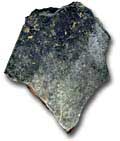Geoscience
Preliminary Exploration Database for Platinum Group Elements (PGE) in Manitoba
 PGE Report Home
PGE Report Home
 Introduction
Introduction
 Release Information
Release Information
 Viewing the Report
Viewing the Report
 PGE Index Map
PGE Index Map
 Analytical Data
Analytical Data
 Data Sources
Data Sources
 Black Shales
Black Shales
 References
References
 Metal Prices
Metal Prices
 Rock Samples
Rock Samples
 Treatment of the Data
Treatment of the Data
 Acknowledgments
Acknowledgments
Treatment of the Data
Owing to time constraints, a detailed analysis of the data contained in Tables 1 to 4 was not possible. It is recommended that anyone reviewing the intrusion database for anomalous PGE values (Table 1) keep in mind that:
-
the majority of the samples were collected during reconnaissance mapping programs or as part of systematic lithogeochemical studies, and are therefore intended to be used to establish background values for the host intrusions; and,
-
anomalously low values (e.g., <1 ppb combined Pd + Pt) may be as significant as anomalously high values (e.g., >100 ppb combined Pd + Pt).
Based on many published, detailed studies of PGE contents in mafic-ultramafic intrusions, it is recommended that the ‘typical’ range of background PGE contents in mafic-ultramafic intrusions be taken as approximately 1 to 20 ppb combined Pd + Pt. Values significantly higher than this (i.e., >100 ppb combined Pd + Pt) indicate that the PGE were concentrated above typical mafic-ultramafic magma background values (e.g., by sulphide liquid or fluids) or that the parent magmas were enriched in PGE. -
Values significantly lower than this (i.e., <0.1 ppb combined Pd+Pt) may indicate depletion of PGE by the prior removal of PGE-rich sulphide minerals, through the action of magmatic or hydrothermal fluids, or derivation from a PGE-depleted magma.
-
Again, it is intended that the final version of the report will contain a comprehensive analysis of the geochemical data.
Geographic Co-ordinates The location of the centroid (geographic centre of intrusion or suite of intrusions) for each occurrence has been given using UTM (Universal Transverse Mercator) co-ordinate values projected in Zone 14 (NAD 27). |
Disseminated sulphides, MZI Pd-Cu-Ni Occurence, Marginal Zone, Fox River Sill |



